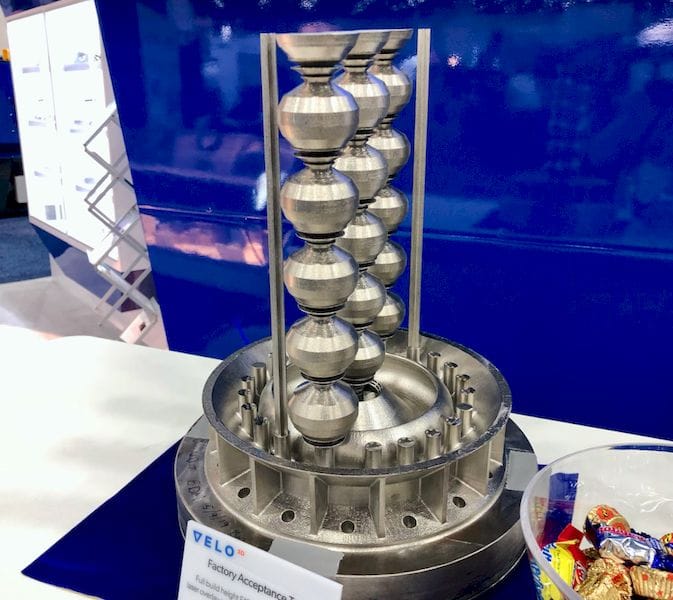
I spoke with Zach Murphree of Velo3D to find out what changes have occurred at the company since they became publicly tradable.
The California-based company has been producing high-end metal 3D printers for several years, and they’ve attracted significant interest. This is largely due to the quality of the metal parts produced on the equipment, and the Sapphire system’s uncanny ability to 3D print many parts without any need for support structures. This alone can save operators considerable effort in post processing.
The company debuted on the NYSE earlier this year, and rocketed almost to the top of our 3D print company leaderboard.
Being a public company is quite different, as the company’s finances are forever in public view, with accountability to countless shareholders. In some ways, this can be a lot more constraining than operating a private company. However, that wasn’t the case with VELO3D. Murphree explained:
“Since going public, the buzz renewed customer interest, and we had our first earnings call this past week. Being a public company removes a lot of constraints. There has been hesitance to using machines by some larger players. Being publicly traded gives them the confidence that we’re in for the long haul.”
In other words, the act of simply being a public company, one that has been officially approved by a major stock exchange, is sufficient for some organizations to mark Velo3D as a company worthy of purchasing equipment from. Big companies making big commitments need big assurances. That’s a message that private 3D printer manufacturers might take to heart.
Murphree continued:
“We are seeing steep growth. The Sapphire XC is our large format machine, and we’re delivering the first one in about a month. There is a significant amount of demand, because the 600mm diameter by 550mm tall build volume is quite relevant for many customers.”
The Sapphire XC is indeed a bigger machine, and it’s equipped with no less than eight lasers for fast 3D printing operations. Murphree explained that the company’s target was to increase the throughput per cost ratio by 4-5X over the current system, mainly through a 40% increase in system cost combined with a 400% increase in throughput.
I asked about their experience during the pandemic and what they have been seeing with clients. Murphree explained:
“We have definitely seen an increased focus on distributed manufacturing, and the ability to bring manufacturing in house. Captive supply chains see the fragility that’s always been there, now it’s being taken seriously. It makes you more responsive and secure when doing it in-house.”
Those new to additive manufacturing soon discover they can print arbitrary geometry, and are able to make things they couldn’t imagine previously.
Murphree believes these concepts will stick once a company is “turned on” to 3D printing.
As for expansion, Velo3D is expanding rapidly in Europe, with an office now in Germany. Murphree said they are “hiring aggressively” today, and that they’ve already delivered machines to European locations.
Murphree said he believes Velo3D has the “best support in the business with their customer service team and engineers.” I’ve heard similar sentiment from others, so he’s likely correct.
I asked Murphree what their biggest issue is, and his response was quite interesting:
“The biggest issue we see is other metal AM systems. There you do process development to get the part to print, and our customers assume that’s always necessary. Velo3D allows you to to print what you want directly, and no specific process is required. Some have cognitive dissonance with that situation.”
This is likely due to Velo3D equipment’s ability to avoid the use of support structures, which are always necessary and troublesome in most other metal 3D printers. Given the knowledge of metal AM in the industry, what can Velo3D tell these customers? He said, simply:
“There’s no need for PhDs.”
Via Velo3D
